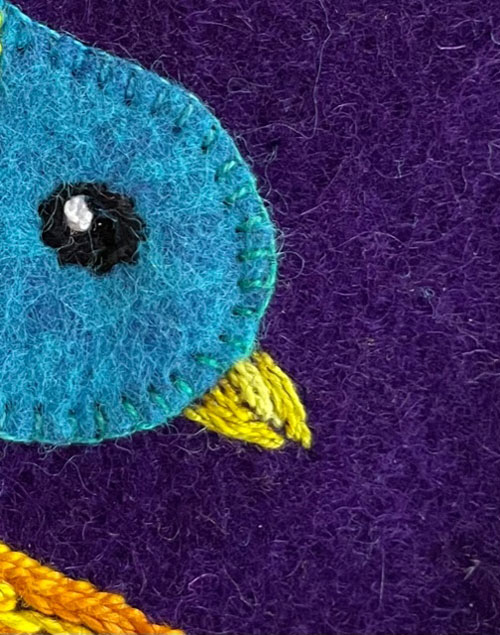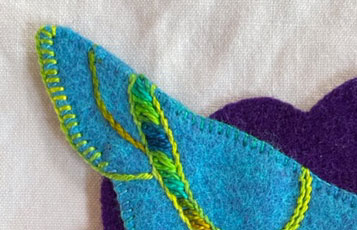
Are you looking at me? Eyes bring everything to life, including this little bluebird. His eye, made with black pearl cotton thread, is stitched in a circle using stem stitches. The small French knot of white acts as the highlight, animating the bird. Rows of stem stitches create his beak and are stitched with a Size 12 Butter, one of my favorite colors of thread and a favorite food. Everything is better with butter on it!
Tip: Repetition of Color

One way to balance out a design is to repeat color throughout the piece. Repetition of color draws the eye around artwork, engaging the viewer. Here you see a size 12 Red Hots thread used on the tail and the belly of the bird. I’ve chosen this red because it is the same red found in the apple.
Those stitches on his tail are lazy daisy stitches placed close together and building a solid shape. Using that same red thread, his belly is stitched with rows of blanket stitches. I can create boxes by stitching the rows next to each other, so his belly has a snazzy pattern suggesting he is a well-dressed bird. Sort of a dandy of a bird. What a show-off!





